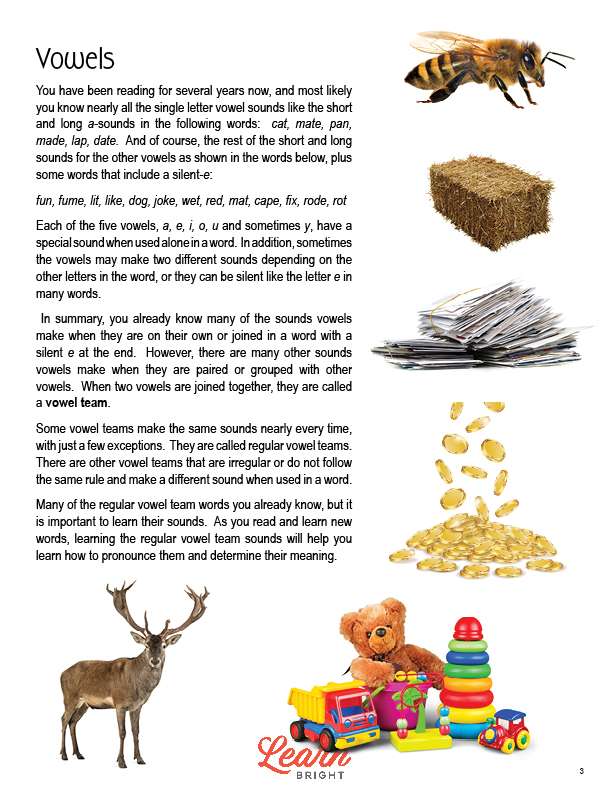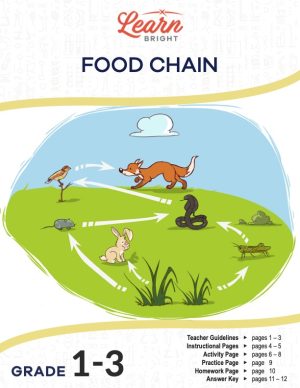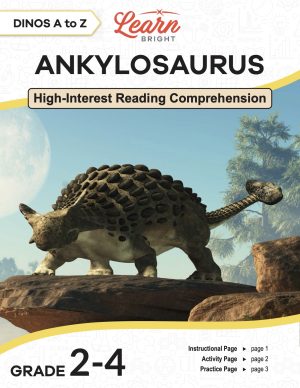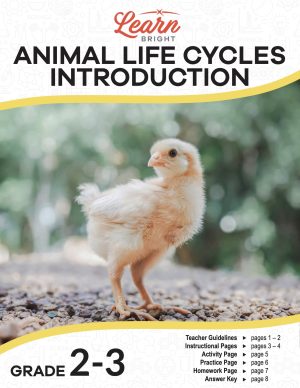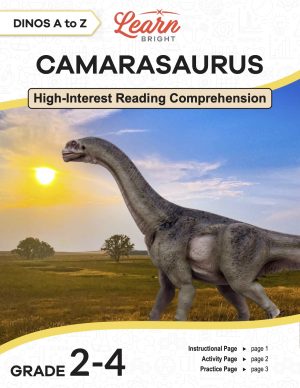Description
What our Regular Vowel Teams lesson plan includes
Lesson Objectives and Overview: Regular Vowel Teams introduces 1st and 2nd graders to final -e and common vowel team that represent long vowel sounds. Students will also learn about additional common vowel teams. This lesson will teach them how to identify the sounds of words that have two vowels next to each other. Specifically, it will focus on -oa, -ee, -ai, -ay, -oi, and -oy.
Three content pages explain what vowel teams are and provide examples of words that contain the above teams. The lesson first reminds students about the sounds they already know, like short-a and long-a sounds. It describes how the vowels can have different sounds based on the other letters in a word. It then defines what a vowel team is and explains what that means for the sounds vowels make in certain words.
The lesson outlines the six vowel teams in a chart. It describes what sound each team makes and provides a list of examples. It also lists exception words. For instance, the -ai team usually makes the long-a sound, but “said” does not follow that general rule. The lesson does not dive too deep into the phonetics of these sounds, even though there are many more rules and exceptions. It simply provides a basic foundation for how to pronounce most words they see with these vowel teams.
WORD CREATION ACTIVITY
For the activity, students will cut out the vowel teams and consonants in the chart. They will then try to make as many words as they can. There is a second page for the activity where students can list the words they created. They will also need to circle the vowel team that they used, which are all listed next to each line where they write their words.
FILL IN THE TEAM PRACTICE WORKSHEET
The practice activity has two parts. For the first part, students must fill in words with the correct vowel team. There are 30 total words that list the consonants, but the two spaces for the vowels are empty. Students will use those two spaces to fill in the missing vowel team to create the correct words.
REGULAR VOWEL TEAMS HOMEWORK ASSIGNMENT
Students must use the 15 words in a word bank to fill in the sentences on the page. Then they must write a few sentences that use at least three of the regular vowel teams they learned about in the lesson.



